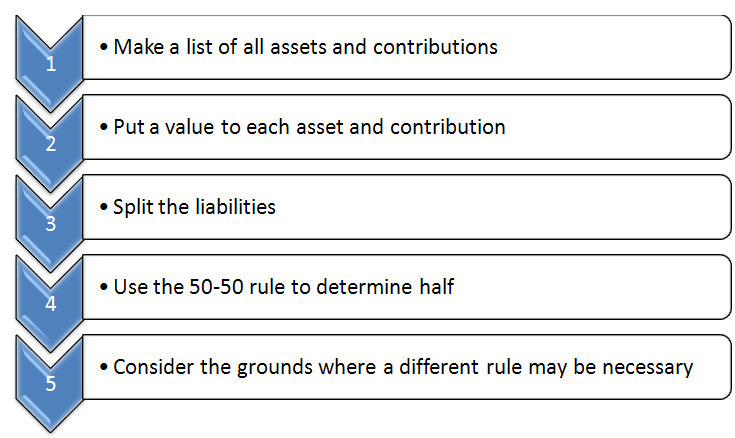Dinesh Munasinha
Latest posts by Dinesh Munasinha (see all)
- Divorce and Property Dispute: Preparing for Litigation - July 30, 2015
- Everything you need to know about Family Trusts: Part 2 – Avoiding Pitfalls - November 8, 2014
- Everything you need to know about Family Trusts: Part 1 - August 21, 2014
 In the previous two articles under this series we discussed how the Courts divide the property in cases of divorce and separation. 1 and secondly, the tax implication and tax planning tools in such a separation 2
In the previous two articles under this series we discussed how the Courts divide the property in cases of divorce and separation. 1 and secondly, the tax implication and tax planning tools in such a separation 2
In this final article I wish to discuss the method by which the parties can protect their properties using the knowledge of the first two articles. This article especially will help those who are preparing themselves for the daunting task of litigating.
You may recall that in the first article we discussed how the Family Law Courts look at a four step process by which they reach their decision. 3
They first identify the assets and liabilities, then they identify the contributions, thirdly they factor in the future needs of the parties and finally examines as to whether adjustments are necessary for the division to be just and equitable.
I am sure you are wondering, ‘Where do I start?’
However daunting it may seem, it could be easy if you follow the simple process I highlight below. Furthermore, it is advantages if you and your spouse/partner and their legal representatives try to agree on an amicable formula before approaching the Courts.
How to approach a property settlement matter if there is no financial agreement

1. Make a list of all assets and contributions
This may sound elementary but as many Court cases suggest this is the most contentious. Let’s look at the assets first.
There is a high likelihood that intangible assets like investments in shares and superannuation funds could be accidently left out. Also there may be other hidden assets which are not in the marital home, like the ones borrowed by relatives for instance. 4
A fair deal of time needs to be spent on listing out all the matrimonial assets. It’s better to list out even the not very expensive assets because all of these have some value. This is generally easier for the parties to agree-on, and all the more reason why you should run it by your spouse/partner too. Remember, we are referring to the identity of the asset and not the financial value. We will place a value for this later.
Contributions is perhaps more difficult to establish and often leads to emotional concerns. However, it is vital to record these. These may take the form of cooking, cleaning, fixing things, taking care of children, taking care of parents etc. Apart from these there are the more obvious contributions such as the salary or profits earned by the couple. Also remember, these could be one-off contributions like a huge bonus, or a lottery you won, etc.
It is important to bear in mind that the assets and contributions should be recognized at the point of approaching the Courts, or if it is an amicable settlement without referring to Courts, at a particular date of agreement.
As stated in Part 1 of this series of articles, it must be borne in mind that the Courts also have a right to cancel contracts if they are made just before the Court case to reduce the pool of assets, such by sale of your favourite car to a friend for a low price with the intention of buying back after the Court case.5
2. Putting a value to each property and contribution
Now we come to the difficult part. There may be assets which have a readily available commercial value, or it may be necessary to get a valuation. If there is a dispute on this, I would suggest that the valuation is done before approaching the Courts. Even if the matter is referred to the Courts it is likely that the Courts would request a valuation, hence it reduces time to get a commercial valuation prior to approaching the Courts.
Valuing the contribution is more difficult as most non financial contributions such as taking care of children or parents are difficult to assess objectively.
Nevertheless, it is always best to make an effort to value them and if there is a dispute on these it may be decided in a Court case. However, as discussed in Part 1, in most Court cases they identify the nature and substantiality of the contributions rather than pinning a specific value.
3. Identify the liabilities
After identifying the assets and contributions it is important to identify the liabilities. Upon deciding the split of assets, the parties should also split the liabilities or compensate the party agreeing to bear the liabilities. For example, if the total assets are $1 million and there are liabilities worth $200,000, one party may decide to take over the entire liability together with assets worth $600,000, whilst the other takes $400,000 without any liability. Hence, the net assets (assets – liabilities) to either party are same.
Just like assets there may be hidden elements in liabilities, or not so obvious liabilities. Consider whether there are any Court cases pending against a party, are their debts on utility bills, credit cards etc.
A point to note in valuing the liabilities is that, like assets, the liabilities also need to be set at a particular date. Hence, as you would have realized, it should be same date you valued the assets.
4. Splitting 50-50
The more obvious and most accepted norm is to divide the assets in half taking into consideration the contributions made by the parties. In doing so it may be more prudent for them to take the assets in whole and compensate the other party monetarily if there is an inequality.
For example let’s assume a couple has $700,000 worth assets and $400,000 of this is accounted by the matrimonial house which the husband lives in after separation. If the split of 50-50 is used the husband will be better off as he has assets worth $400,000 whereas he is only entitled to $350,00. In this case, it may be best that he takes over the house, gives away the rest of the assets and further agree to repay the balance $50,000 in portions subsequently.
However, as I stated earlier in Part 1 of this article, the so called 50-50 split is not always the correct version to follow. In the event that either of the parties feel that it is not just and equitable to do so they can approach Courts to make an alternate determination. Also this is the point of time where one also needs to understand the tax implications of receiving a particular property. In Part 2 of this series we looked at a family trust as a tool for minimizing tax liability by properly planning the distribution.
It would be best if the parties could at least in part, agree on which of the properties should be devolved to which spouse/partner. This will save the time and cost of reaching a decision in Courts.
5. A formula different to 50-50
If the 50-50 formula creates injustice to parties as to their respective future needs, or where it mismatches the contributions made by each party (especially in the case of marriage which has subsisted for a short period), or for any other factors stated in the analysis above, it is possible to vary it by approaching Courts 6
Therefore, if you feel there is a need to step away from the 50-50 formula to make it more equitable, you may need to think through the reasoning and instruct your legal representative of the same.
Conclusion
Hence, it is clear that much needs to be considered when approaching matrimonial property division. On one hand whilst one needs to understand the legal aspects, they also need to appreciate the taxation aspects to make better choices.
Careful planning and wherever possible amicable discussions with the spouse or partner prior to reaching the Courts may surely assist both parties to arrive at a solutions which is equally beneficial.
- How the Courts Divide Property in Divorce Proceedings <http://www.familylawexpress.com.au/family-law-brief/divorce-2/spousalmaintenance/how-the-courts-divide-property-in-divorce-proceedings/2339/.
- Tax Implications of a Property Settlement <http://www.familylawexpress.com.au/family-law-brief/divorce-2/financialdispute/property/tax-implications-of-a-property-settlement/2562/> .
- As established as a standard process in full court in Hickey v Hickey and the Attorney General for the Commonwealth of Australia (Intervenor) 2003 FLC 93-143 <http://www.austlii.edu.au/au/cases/cth/FamCA/2003/395.html>.
- Grace v Grace (No 2) 2012 NSWSC 1321 <http://www.austlii.edu.au/au/cases/nsw/NSWSC/2012/1321.html> .
- By using the provisions given in section 85 of the Family Law Act <http://www.austlii.edu.au/au/legis/cth/consol_act/fla1975114>.
- See Stanford v Stanford 2012 HCA 52 .
